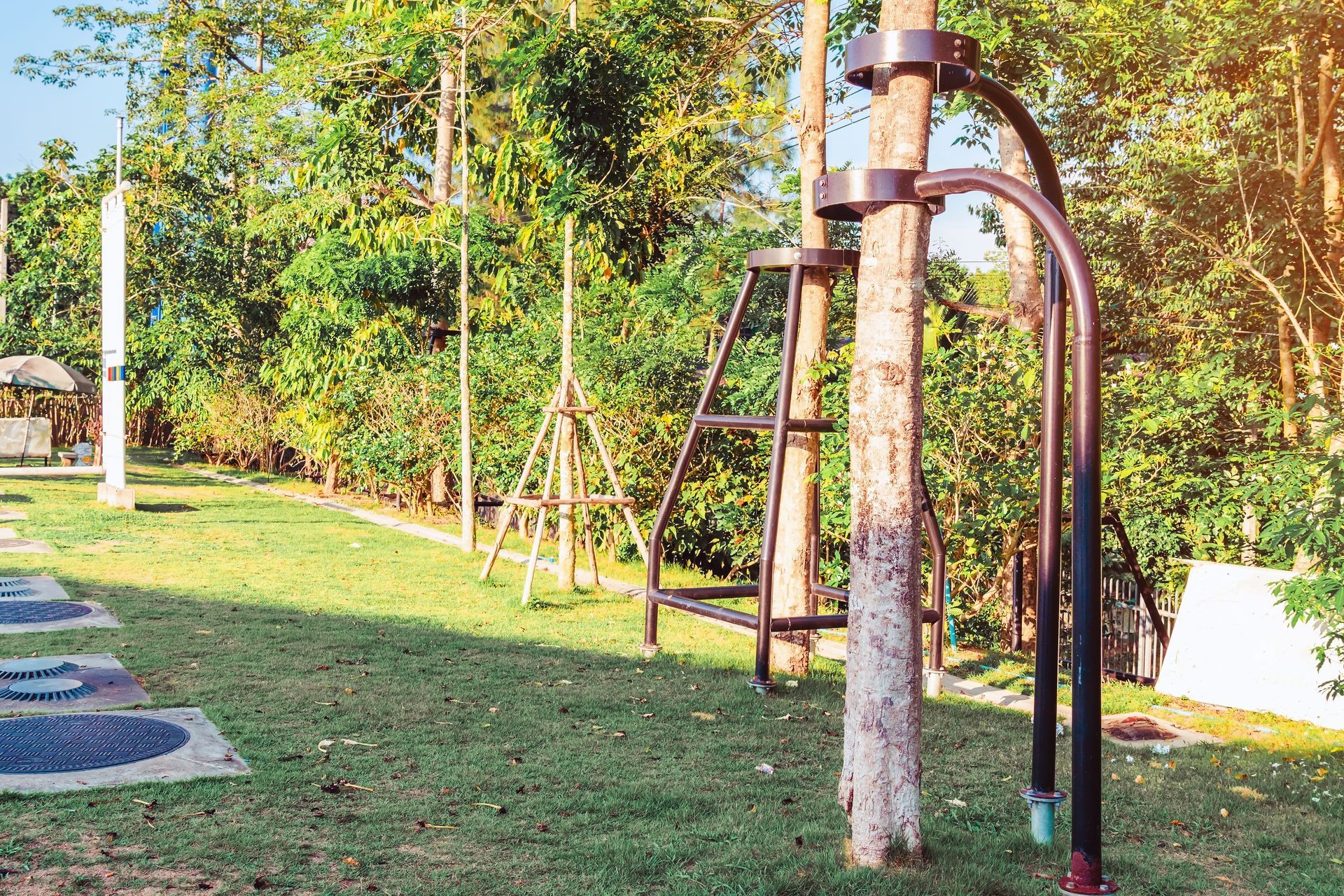- Home
- Home
Cabling & Bracing
The Importance of Cabling and Bracing for Tree Health and Safety in Saint Paul
Cabling and bracing are two distinct, yet complementary, methods used to support and strengthen trees. Cabling involves installing flexible steel cables between major limbs to reduce the strain and movement of branches during high winds or heavy snow loads. Bracing, on the other hand, involves the use of rigid rods or braces to reinforce weak or split branches, providing additional support from within the tree’s structure.
Benefits of Cabling and Bracing
Enhancing Tree Health
One of the primary benefits of cabling and bracing is the enhancement of tree health. By providing additional support to weak or overextended branches, these techniques help prevent breakage and allow the tree to grow in a safer and more balanced manner. This support can be particularly beneficial for mature trees that have developed structural weaknesses over time.
Ensuring Safety
Safety is a major concern when it comes to urban trees. Weak or damaged branches pose a significant risk to people and property, especially during severe weather events. Cabling and bracing help mitigate these risks by reducing the likelihood of branch failure. This not only protects public safety but also helps avoid costly property damage.
Extending Tree Life
Cabling and bracing can significantly extend the life of a tree by preventing catastrophic failures. By addressing structural weaknesses early on, these techniques help maintain the tree’s structural integrity, allowing it to continue providing environmental and aesthetic benefits for many years.
Get a quote
Thank you for contacting us.
We will get back to you as soon as possible.

Top 10 Signs Your Saint Paul Trees Need Cabling and Bracing
Cracks in the trunk or major branches indicate structural weakness. Cabling and bracing can prevent further damage and support healing.
Splits at the tree’s crotch are a sign of potential limb failure. These techniques stabilize the tree, preventing further splitting.
Limbs that appear heavy or unbalanced, especially during storms, pose a significant risk. Cabling and bracing redistribute weight, enhancing stability.
Trees with multiple trunks or co-dominant stems are prone to splitting. Cabling and bracing provide the necessary support.
Trees damaged by storms are vulnerable. These methods prevent further damage and aid recovery.
Leaning trees can be hazardous. Cabling and bracing help correct or stabilize the lean.
Decay or weak joints compromise structural integrity. Cabling and bracing maintain stability.
Large, heavy canopies are at risk of breaking. These techniques offer crucial support.
Preserving historical or valuable trees is important. Cabling and bracing contribute to their longevity and safety.
Trees in high-traffic areas pose safety risks. Cabling and bracing enhance public safety and prevent accidents.
Having an Emergency?
We're available 24-hours a day, 7 days a week.
Common Misconceptions About Tree Cabling and Bracing Debunked
Tree cabling and bracing are essential techniques in maintaining tree health and stability, yet several misconceptions persist about these practices. Understanding the truth behind these myths can help property owners make informed decisions about their trees.
Misconception #1: Cabling and Bracing Harm the Tree
Many believe that installing cables and braces harms the tree. In reality, when done correctly, these methods support the tree’s natural structure and promote long-term health. Professional arborists use precise techniques to ensure the tree remains strong and healthy.
Misconception #2: Cabling and Bracing are Temporary Fixes
Some think these supports are short-term solutions. However, cabling and bracing can provide long-lasting benefits. Properly installed systems can protect a tree for decades, preventing damage and prolonging its life.
Misconception #3: Only Damaged Trees Need Cabling and Bracing
Preventative cabling and bracing can benefit even healthy trees, especially those with heavy limbs or multiple trunks. These proactive measures can prevent future structural issues and reduce the risk of limb failure during storms.
Misconception #4: Cabling and Bracing are Expensive and Unnecessary
While there is a cost associated with these services, they are a worthwhile investment. The expense of cabling and bracing is often far less than the potential cost of tree removal or property damage caused by falling limbs.
Misconception #5: Cabling and Bracing Can Be Done DIY
Attempting to cable and brace trees without professional expertise can lead to improper installation, causing more harm than good. Certified arborists have the training and experience to install these systems correctly and safely.
Understanding the truth about tree cabling and bracing can help you make better decisions for your landscape. For reliable and professional tree care services, consult with Tree Service St Paul. Our experts are ready to help maintain the health and safety of your trees.